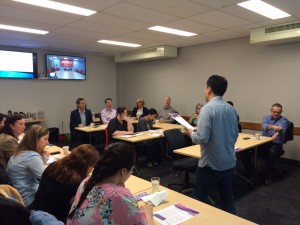Prompted by the limitations of current research which looks only at organisational change attitudes at a single point in time; omits employees’ subjective experience of change; and, likewise, the role of psychological mechanisms as mediators between the two with one’s health and wellbeing, Associate Professor Alannah Rafferty (UNSW) has, with colleague, Professor Nerina L. Jimmieson (QUT), conducted a study of 260 adult employees about to, or currently experiencing, large-scale organisational change.
Measuring the change through three aspects — process, content (what’s been changed), and context (what has shaped the organisation’s behaviour during the change), Alannah – a guest of WOW’s Seminar Series program – highlighted her team’s investigation into the relationship between change frequency, its transformational impact on workers, resistance to it (characterised by negative emotions, actions and belief about the change), and insomnia and psychological wellbeing.
Respondents highlighted 179 different descriptors of change, with more than 280 separate changes reported to have taken place:
“The most common descriptions involved changes to the way work was being done, modifications to staffing, relocations, and service provision”, notes Associate Professor Rafferty.
Of the 460 participants from the initial online survey, 260 agreed to take part in a follow up questionnaire four months later. And it was here that the effect of organisational change on employees’ sleep quality and psychological wellbeing was garnered; Alannah explains:
“What is clear is that negative emotions about the changing strategy and structure of the organisation [were] driving employees’ psychological wellbeing and sleep quality four months later. We [also] identified resistance to change as a mediator of relationships among transformational change and the frequency of change and insomnia and psychological wellbeing.”
In concluding, Associate Professor Rafferty recommended that organisations communicate and ‘chunk’ information into smaller packages for their employees for a less disruptive, smaller-scale experience of change (which is then likely to benefit their wellbeing), and suggests more emphasis be given to the role of negative emotions on change and workplace performance.
You can contact Alannah Rafferty directly for a copy of her PowerPoint from this 17 September, 2015 presentation: [email protected].

